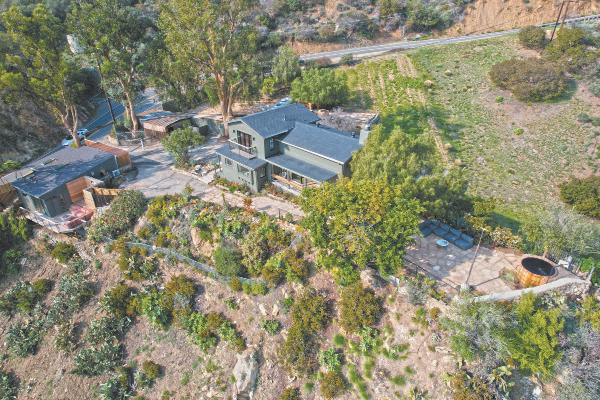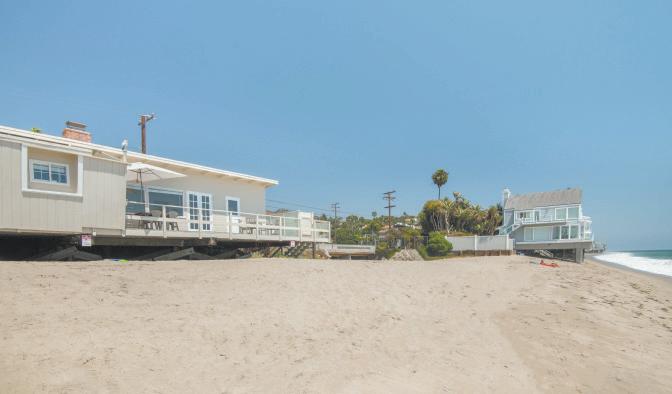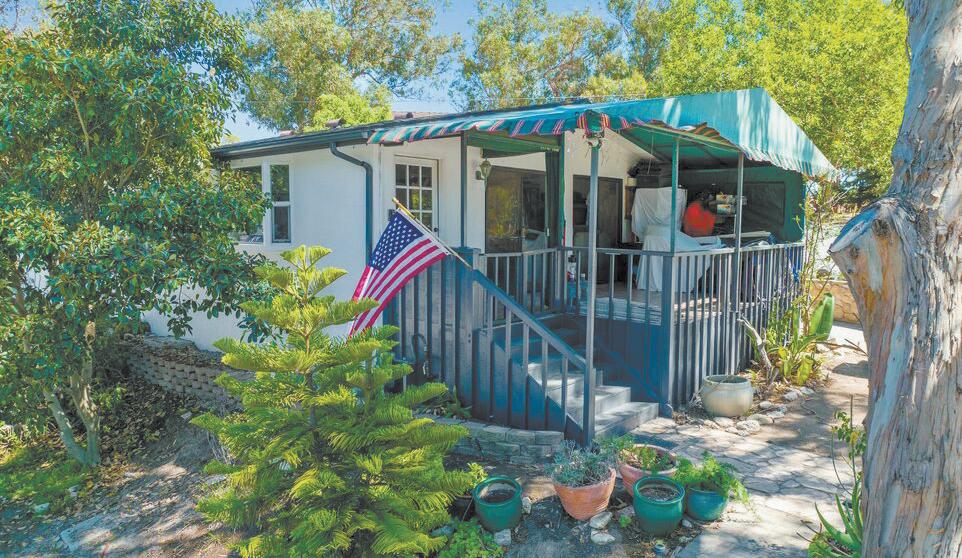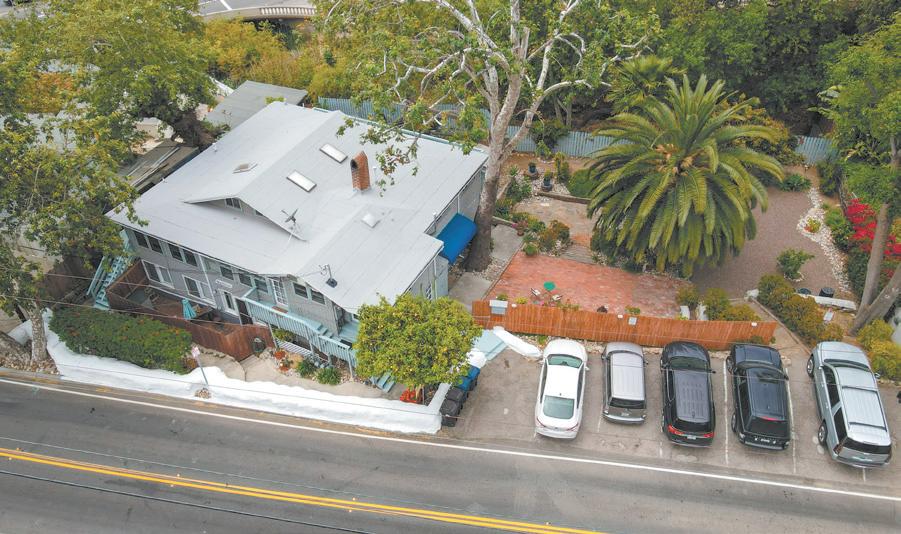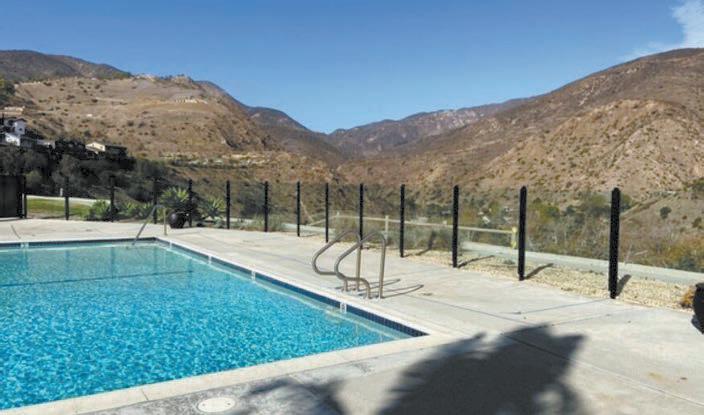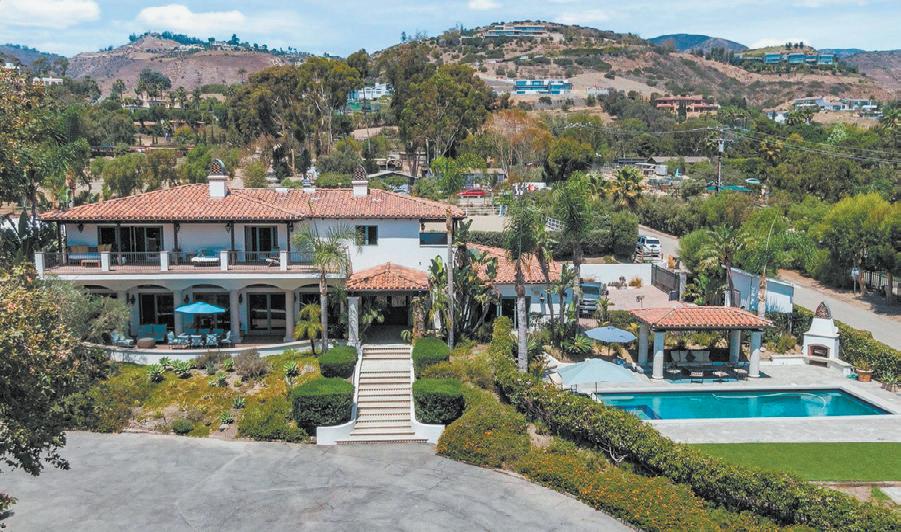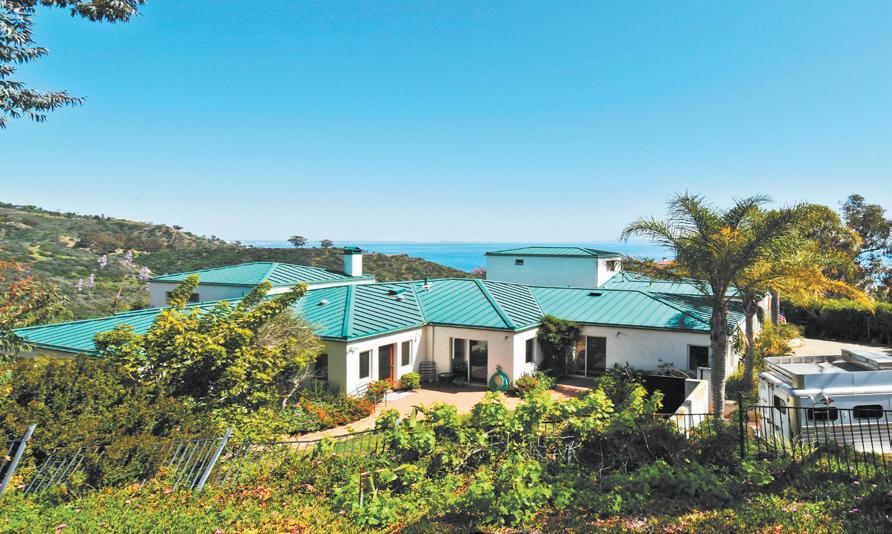
7 minute read
REAL ESTATE
bicyclists. We have some long-haul tourists that are going through this area. We also have some folks who are good at riding in constrained spaces and are comfortable mixing somewhat with higher-speed vehicles. But overall this is a pretty scary section of road to ride a bike on. It’s not comfortable. Nobody’s out there taking their kids for rides.”
Some areas of that stretch of PCH have shoulders, and in other places there are none. Caltrans said there is little pedestrian activity on that stretch of roadway.
“You’ve probably not seen a lot of folks out there walking just for fun,” Haire said. “A lot of the pedestrian activity is actually folks who have driven out there, gotten out of their car, and are pulling their surfboards or picnic materials out of their vehicles. A lot of the parking activity that
John Paul DeJoria, self-made billionaire and philanthropist best known as a cofounder of the Paul Mitchell line of hair products and the Patrón Spirits Co., purchased Tuna Canyon in 1990. He intended to develop the property into a dozen 20-acre estates. However, after walking the land, DeJoria changed his mind and decided to donate Tuna Canyon to preserve it as open space.
In 2000, he approached MRT, a nonpro t land trust dedicated to preserving land in the Santa Monica Mountains, with a proposal to sell and gift Tuna Canyon to them. DeJoria and MRT executed a purchase agreement that required Tuna Canyon to “be held as open space in perpetuity and that no development of any kind shall take place on the property.”
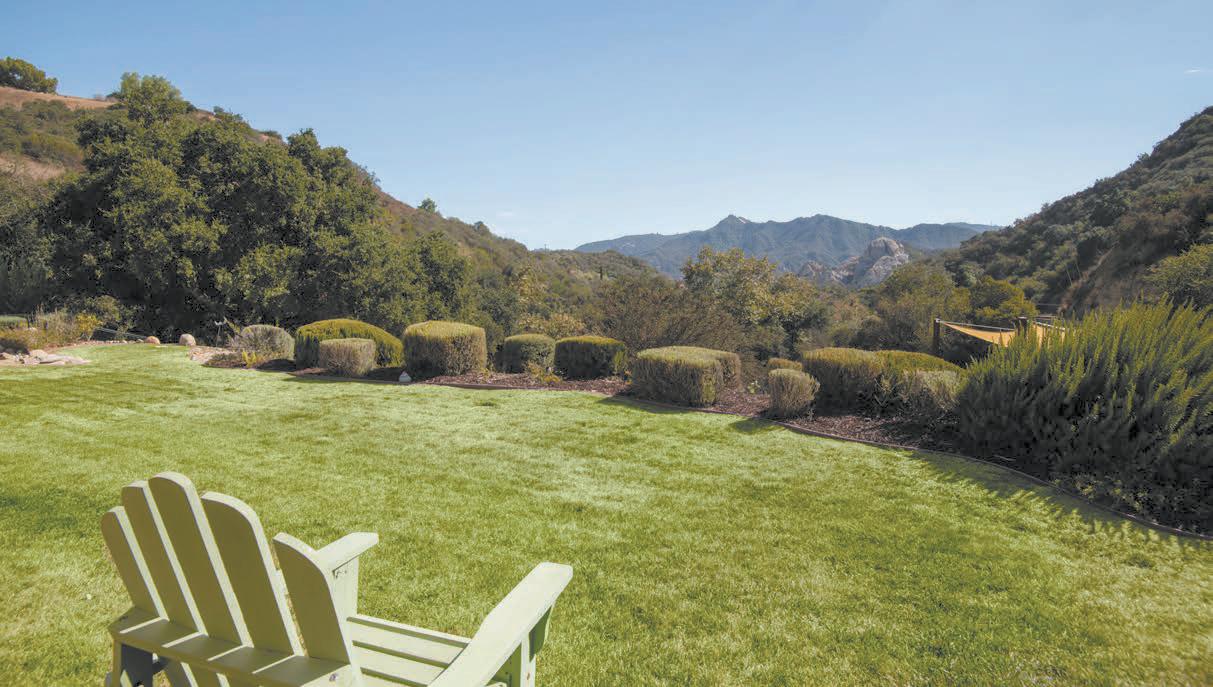
DeJoria agreed to sell Tuna Canyon to studio owner currently residing in Monterrey, Mexico, was arrested the same week in Houston upon arrival on a ight from Mexico. She appeared in the Southern District of Texas court. Both defendants are expected to appear in Los Angeles federal court in the coming weeks.

Each is charged with one count of conspiracy to commit wire fraud and mail fraud, one count of aggravated identity theft, two counts of wire fraud, two counts of mail fraud, one count of conspiracy to engage in money laundering, two counts of money laundering, and one count of engaging in a monetary transaction in criminally derived property.
According to the indictment, beginning in June 2017, Flores and Moore used false promises and representations to befriend the physician and successful investor worth over $60 million. His bipolar disorder became severe after he burned his hands in 2016 and could no longer perform surgery, according to a report in Market Watch. Within days of meeting Sawusch at an ice cream shop in Venice Beach, Flores and Moore moved into his beachfront Malibu home — rent free — and gradually took control of his life by pretending to be his new “best friends” and caregivers.
In September 2017, after the victim su ered a severe mental breakdown resulting in his arrest and detention in LA County jail, Flores allegedly fraudulently induced Sawusch to sign over power of attorney, which allowed control over his nances.
Flores allegedly promised he’d only use the powers to post bail, and would immediately rescind them once the victim was out of jail. But after Sawusch was released, Flores allegedly went back on his word and used the powers to open bank accounts in the victim’s name, giving himself and Moore access to the victim’s wealth.
From September 2017 to May 2018, Flores and Moore allegedly diverted the victim’s funds to their own bank accounts, isolated the victim from his family and longtime friends, and provided the victim with various drugs.
In the nal days of Sawusch’s life, Flores and Moore allegedly gave the victim LSD (lysergic acid diethylamide), which caused his mental state to severely deteriorate. While the victim was under the in uence, Flores allegedly changed the two-step authentication feature on the victim’s $60 million online brokerage account after previously changing we see is not your typical turnover parking that you see in town. ese are folks who are parking for long periods of time. ey may be having a cookout or milling around their vehicle and then walking some distance to the beach access.” e engineering rm is getting federal guidance on what type of bikeways to implement based on vehicle speed. A separated bike lane is suggested over a shared lane on highways where vehicular speed generally exceeds 35 mph.
“ ere’s really not a section of this project where people are only driving 35mph,” Haire stated. “We really think it would be important to have a separated facility out here, one that separates bicyclists and pedestrians from vehicular tra c, provides a safe barrier between those uses, and really gets folks out of harm’s way.”
MRT for $1.06 million and donate the remainder of the appraised value of $13 million as part of the purchase. He executed a grant deed conveying Tuna Canyon to MRT subject to covenants, conditions, restrictions, reservations, and easements of record.
MRT later defaulted on the loan they took out to purchase the property, and Canyon Vineyard Estates, LLC scooped up the property. In 2017, CVE began legal proceedings to extinguish the use restrictions contained in the grant deed, so they could develop it. For whatever reason, they continue to maintain that MRT is legally responsible for clearing the homeless encampments.
“We’re pursuing a summary abatement, which means an immediate abatement,” Dueñas said. “Because there’s a question
Caltrans is seeking recommendations on how to move forward on the planning side while also integrating larger climate resilience measures.
If there is no room for a shared bike path, engineers are considering building a raised sea wall as an option. e use of natural materials may be favored in construction for stabilizing cli s or shorelines connected with the project even though one engineer commented that the use of natural materials may not have the longevity of other man-made materials over time.
Project engineers are taking into consideration landslides, coastal ooding, coastal erosion, sea level rise, and even tsunamis during their planning phase to accommodate bicyclists and pedestrians.
In identifying planning-level concept strategies to address long-term climate of who is responsible for doing the cleanup, the city attorney is reviewing the most recent court decision concerning CVE and its claims, which took place in November … I think that will be resolved this week.”
At the previous re in Tuna Canyon, on July 9, 2021, which burned six acres, re ghters had to hike in at least 2,000 feet of hose to reach the burn zone and face the possibility of falling rocks. Fire Capt. Cole Kahle said he witnessed the homeless pouring out of the area during that re. A number of CVE’s parcels in Tuna Canyon have been cited by LA County for failing to do brush clearance over a period of years. So, the owner is not only failing to keep trespassing campers o the land, they’re not even bothering with annual brush clearance. However, Dueñas said CVE brought in security patrols for a the phone number listed on the account from the victim’s number to his. Four days before Sawusch’s death and while he was still under the in uence of LSD, Flores allegedly initiated two $1 million wires from the victim’s brokerage account to his own personal bank account. Flores and Moore left after the victim evicted them and proceeded to stay in a luxury hotel paid for with the victim’s money. Additionally, Flores and Moore allegedly watched the victim’s deteriorating mental condition on video cameras installed throughout the Malibu beach house. e FBI (Federal Bureau of Investigation) and IRS (Internal Revenue Service) Criminal Investigation o ce investigated this matter. Assistant U.S. Attorney Andrew M. Roach of the Cyber and Intellectual Property Crimes Section is prosecuting the case. change impacts all while improving bicycle and pedestrian safety and accessibility, Caltrans says its goals are also to protect beach access, habitat enhancement and ecological resilience over the infrastructure’s lifespan. time, but discontinued it.
In May 2018, the victim died in his Malibu home at the age of 57. e coroner’s o ce listed the cause of death as the result of mixing ketamine with alcohol. His death was deemed an accident.
As Sawusch’s family began settling his estate, they discovered nearly $3 million was missing — transferred into accounts controlled by Flores and Moore, according to Market Watch. But that wasn’t the end of it, prosecutors said. In the following months, the pair moved back into Sawusch’s house, claimed it as theirs, and said they were entitled to a third of his fortune. A lengthy legal ght then took place between the pair and the Sawusch family.
Flores and Moore allegedly withdrew large sums of money from his accounts and allegedly also hid information about the victim’s nances from his mother and sister, who both live in Florida.
In the ensuing lawsuit in LA Superior Court, Flores and Moore allegedly violated multiple court orders ordering them to return the funds stolen from Sawusch. ey allegedly attempted to launder the fraudulent proceeds by funneling the money through multiple di erent accounts to prevent the victim’s estate and court-appointed receiver from getting the money. e lawsuit was settled with Flores and Moore agreeing to repay the victim’s estate $1 million, which they still haven’t done.
If convicted on all counts, Flores and Moore would face statutory maximum sentences of 20 years in prison for each fraud count, 20 years on the conspiracy to commit money laundering and laundering of monetary instruments counts, 10 years on transactional money laundering count, and a mandatory two-year prison sentence for the aggravated identity theft count.
“It’s looking at coastal resilience and how Caltrans can take a more proactive approach to not just repair things but also transportation safety along the corridor with a focus on bike and pedestrian safety,” commented Paul Moore of ARUP Consultants. “Parts of this corridor are a lot less safe than other comparable corridors throughout the state. It’s a problem people know and have seen. e nature and habitat is part of the allure here. We want to make sure that’s protected and preserved.” Public comment can be sent to Stella. Yip@arup.com through Feb. 10.
In response to the 2021 re, Malibu passed an expanded “Nuisance Abatement” ordinance that went into e ect Aug. 20, 2021; giving private property owners a more detailed de nition of what constitutes a nuisance. It now includes fire and biohazards; storage of cooking, heating and camping equipment; and trash and debris.

In addition, nuisances were de ned as conditions that threaten adjacent properties and the general community.
With the new “summary abatement” procedure, the city manager must rst notify the owner of the hazardous conditions, and ask them to voluntarily take care of it. If they don’t, the city has the authority to enter the property, instigate abatement procedures, and bill the property owner for the clean-up.

